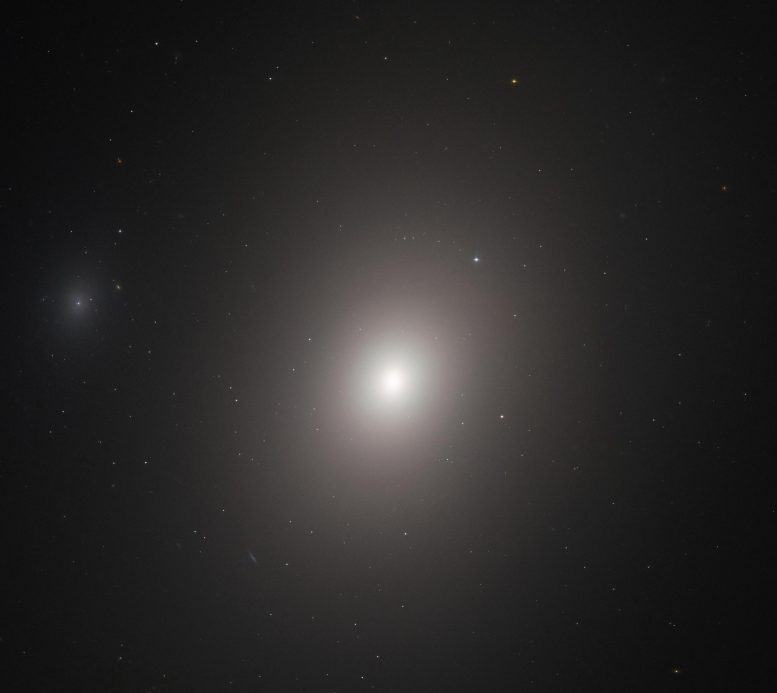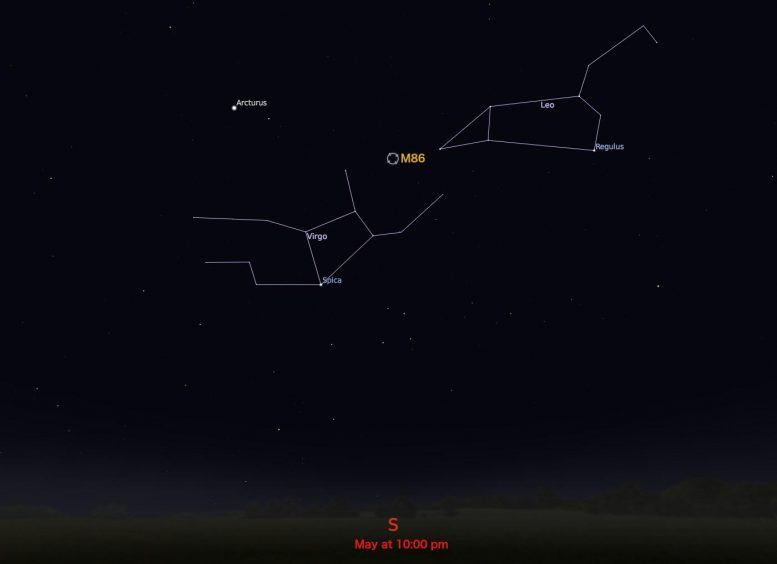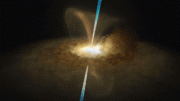
This image from the NASA/ESA Hubble Space Telescope shows the galaxy Messier 86 which is situated about 50 million light-years from Earth. The galaxy is moving through space remarkably quickly — its current trajectory is bringing it in our direction, back towards the center of its cluster from the far side, at the incredible speed of over 543,000 mph. Credit: ESA/Hubble & NASA, P. Cote et al.
This image from the NASA/ESA Hubble Space Telescope shows the galaxy Messier 86. Despite its being discovered over 235 years ago by astronomer Charles Messier, the morphological classification of Messier 86 remains unclear; astronomers are still debating over whether it is elliptical or lenticular (the latter being a cross between an elliptical and spiral galaxy).
Messier 86 is part of the Virgo Cluster of galaxies and is situated about 50 million light-years from Earth. The galaxy is moving through space remarkably quickly — its current trajectory is bringing it in our direction, back towards the center of its cluster from the far side, at the incredible speed of over 543,000 mph (874,000 kph)! Because of the speed with which it is moving through the cluster, Messier 86 is undergoing a process known as ram-pressure stripping. The resistive material filling the gaps between individual cluster galaxies is pulling at the gas and dust in Messier 86 and stripping them out as the galaxy moves, creating a long trail of hot gas that is emitting X-ray radiation.
Astronomers are using Hubble observations such as this to study elliptical and lenticular galaxies, both of which are often found at the centers of galaxy clusters. By studying the cores of these galaxies, astronomers hope to determine details of the central structure and to analyze both the history of the galaxy and the formation of its core.

This star chart for M86 represents the view from mid-northern latitudes for the given month and time. Image courtesy of Stellarium
Messier 86 is featured in Hubble’s Messier Catalog, which includes some of the most fascinating celestial objects that can be observed from Earth’s Northern Hemisphere.









Oh My God! At that rate it will be here in 60 Billion years! What are we going to do???
Sara TG, I calculated about 60 billion as well, glad to see my calculation was likely correct since you said the same thing. Let me riddle you this one… If it is headed towards our galaxy where we are *here* now, will it matter in 60 billion years after our galaxy has also moved and we are no longer here?
They should be factoring in the fact that our galaxy moves huh?
Larry B, If we moving towards the M86 at similar speeds it could be a lot less that 60 Billion or vice versa. Has this been considered?
So what? The entire milky way is moving towards the great attractor at 1.3 million miles per hour. This article is like riding in a car doing 130 mph and getting excited about a car doing 50 mph.
If you collide there would be considerable pain though hypothetically speaking of course…but every action has it’s reaction.
This has absolutely nothing to do with ramming strippers. Any of you mathletes able to triangulate where the button is to turn off nerd mode for the search bar?
The article is not about a galaxy crashing into the Milky Way. If the commentators had read all 4 paragraphs, they might have noticed the article is about “studying the cores of these galaxies, astronomers hope to determine details of the central structure and to analyze both the history of the galaxy and the formation of its core.”
And I thought the purpose of such articles was for “luddaphobes” to bounce virtual particles off one another…and advertising of course. Silly me. Fun reading though, and thank you for doing the math and speculation amigos! Saved me some grey matter stress. I guess it is not too late yet to sell my properties on Earth, before the impending Doom!
Nice day everyone!
At that speed and distance it would take that galaxy over 60 billion years to reach us. Your sensationalist headline (“moving toward us at 543,000 mph”) clearly identifies Scitech as just another clickbait nonsense publication.
👍
Did they factor that we are looking at it from its past location 50 Million years ago? It could be slightly closer to earth than what it looks like.
I have the same question about virtually every space article. They put these observations in present tense, like “this is happening 500 million light years’s away in galaxy x,” when what we’re really seeing is by definition what happened 500 million years ago. We have no idea what’s happening in the galaxy NOW!
Could we calculate actual current distance via the blueshift?
Why must EVERY science article have ignorant jerks making stupid comments ? Are you REALLY so hateful, insecure etc. That you cant just enjoy the comments?
I liked John Doe comment